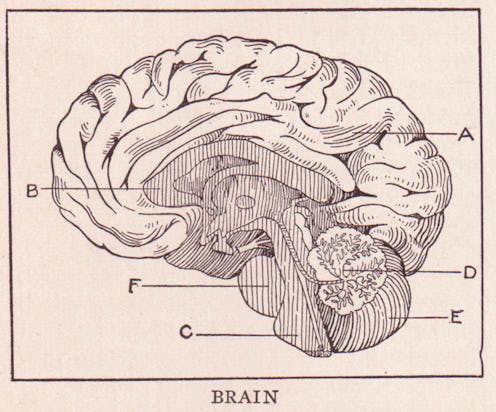Life
What Causes Depression?
There are many different varieties of depression-related research going on concurrently in the scientific world, which reflects just how complicated the disorder is. It's not like a broken leg, where the fix is obvious; depression involves a mixture of genetic, environmental and biological factors that combine to create an issue experienced, in its most severe form, by 15 million Americans. And that means both understanding and curing it is one of the trickiest problems on the table.
Luckily, though, new approaches keep giving us new opportunities to understand it, and the latest science out of Columbia University provides a fresh insight into an unexpected the idea: depression might be created by the way in which neurons "branch" in the brain.
As the difficulties many experience with antidepressants and the ongoing search for new therapies show, there isn't a 'magic bullet' for depression. Instead, there's still clearly a lot we've got to learn. While depression has been part of the human experience for millennia under various names, our approaches to curing it have run the gamut from the terrifying to the merely ineffectual; but with each new discovery, hopefully we're inching closer to something that might help the majority of sufferers.
What We Know About Depression & The Wiring In Your Brain
Depression is often, on a basic neurochemical level, a matter of miscommunication. Neurons within the brain communicate via neurotransmitters, through which we interpret the world, experience and process information; this neural network and how it uses signaling behavior seems to be at the root of some depressive mood disorders. We know that serotonin, a neurotransmitter, is involved on some level, though the idea that "low serotonin" is the cause is actually a vast oversimplification; it's more accurate to say that it seems to impact the ways in which we process our emotions. Neurogenesis, or the creation of new neurons in the brain, is also believed to play a role in mood disorders.
In a depressive brain, it seems, neurons and their ability to connect with one another appropriately are somehow flawed, creating or enhancing low mood, rumination, destructive thinking and other nasties. "Increasingly," the New Yorker wrote in 2015, "neuroscientists believe that the key to understanding how the brain works lies in its over-all neural circuitry, and the way that widely separated brain regions communicate through the long-range projection of nerve fibers. In this view, mental disorders result from the shorting-out or disruption of the larger circuit wiring of the brain".
One of the big steps forward for understanding the circuitry of depression in the brain came in 2005, when research discovered that people carrying genes that were linked to a predisposition to depression had both lower volume in the parts of their brain used for a kind of emotional processing, and fewer neural "couplings" within it.
However, deficiency isn't necessarily the whole story. Depressed brains may also use their connections too much; science released in Scientific American in 2010 noted that the limbic and cortical bits of the brain in depressed patients, which are related to emotional processing, sent a "barrage" of messages at a far higher volume than normal. Not only are the connections haywire, the messages coming down the lines are also abnormal.
How This New Research Might Help Us
The new Columbia University research shines an intriguing light on one particular way in which the depressive brain may get that way, and what actually lies behind the neural disorganization of depression. The scientists were focusing on neurons that use serotonin as a neurotransmitter, and discovered that there's a specific gene that makes them do this properly. Without it, the wiring goes wrong, serotonin gets distributed in bits and bobs, and depression rears its head.
The "average" brain, it seems, obeys a gene that tells it to set out serotonin receptors in a sort of tiled pattern throughout the brain, regularly and predictably. They look like elegant trees, "branching" in complicated ways that somehow never get intertwined. Intrigued, the scientists knocked out the gene in mice, and watched what happened. The neurons lost the ability to distinguish themselves from others and keep themselves evenly distributed; instead, they got tangled. And when the mice without the gene were tested, they showed behavioral signs of depressed mood, from hopelessness to an increase in fear.
What this means for us humans dealing with depression is a bit complicated, however. It's not being suggested that all people with depression lack this gene; but it does indicate another way in which neural wiring, and the ways in which the brain communicates, can seriously impact mood when it deviates from the norm even a little. Keeping connections straight and regular is highly important for regular brain function, and a little knotting or confusion seems to make moods go, well, haywire. Future help for depressives could focus on mapping the precise ways in which their neural connections differ from regular ones, and seeing how different therapies shift those networks. We're probably still a while off from there — but it's good to know we're one step closer to developing new therapies, treatments, and ways to make our brains stop working against us.
